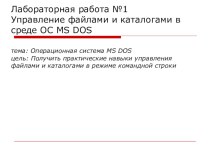- Главная
- Разное
- Бизнес и предпринимательство
- Образование
- Развлечения
- Государство
- Спорт
- Графика
- Культурология
- Еда и кулинария
- Лингвистика
- Религиоведение
- Черчение
- Физкультура
- ИЗО
- Психология
- Социология
- Английский язык
- Астрономия
- Алгебра
- Биология
- География
- Геометрия
- Детские презентации
- Информатика
- История
- Литература
- Маркетинг
- Математика
- Медицина
- Менеджмент
- Музыка
- МХК
- Немецкий язык
- ОБЖ
- Обществознание
- Окружающий мир
- Педагогика
- Русский язык
- Технология
- Физика
- Философия
- Химия
- Шаблоны, картинки для презентаций
- Экология
- Экономика
- Юриспруденция
Что такое findslide.org?
FindSlide.org - это сайт презентаций, докладов, шаблонов в формате PowerPoint.
Обратная связь
Email: Нажмите что бы посмотреть
Презентация на тему Shortest paths and spanning trees in graphs
Содержание
- 2. Shortest paths and spanning trees in graphsLyzhin Ivan, 2015
- 3. Shortest path problemThe problem of finding a
- 4. Dijkstra algorithmThere are two sets of vertices
- 5. Trivial implementationvoid dijkstra(int s){vector mark(n, false);vector d(n,
- 6. Implementation with setvoid dijkstra(int s){set q; //(dist[u],
- 7. Implementation with priority queuevoid dijkstra(int s){priority_queue q;
- 8. Floyd–Warshall algorithmInitially, dist[u][u]=0 and for each edge
- 9. Implementationvoid floyd_warshall(){vector dist(n, vector(n, INF));for (int i
- 10. Bellman–Ford algorithm|V|-1 iterations, on each we try
- 11. Implementationvoid bellman_ford(int s){vector dist(n, INF);dist[s] = 0;for
- 12. Minimal spanning treeA spanning tree T of
- 13. Prim’s algorithmInitialize a tree with a single
- 14. Implementationvoid prima(){set q; //(dist[u], u)vector dist(n, INF);dist[0]
- 15. Kruskal’s algorithmCreate a forest F (a set
- 16. Trivial implementationvoid trivial_kruskal(){vector color(n);for (int i =
- 17. Implementation with DSUvoid kruskal(){DSU dsu(n);sort(edges.begin(), edges.end());for(auto e : edges)if(dsu.findSet(e.u)!=dsu.findSet(e.v)){add_to_spanning_tree(e);dsu.unionSets(e.u, e.v);}}
- 18. Disjoint-set-union (DSU)Two main operations:Find(U) – return root
- 19. Implementationstruct DSU{vector p;DSU(int n) {p.resize(n);for (int i
- 20. Path compressionWhen we go up, we can
- 21. Union by sizeint unionSets(int u, int v){int
- 22. Linkshttps://en.wikipedia.org/wiki/Dijkstra%27s_algorithmhttps://en.wikipedia.org/wiki/Floyd–Warshall_algorithmhttps://en.wikipedia.org/wiki/Bellman–Ford_algorithmhttps://en.wikipedia.org/wiki/Kruskal%27s_algorithmhttps://en.wikipedia.org/wiki/Prim%27s_algorithmhttps://en.wikipedia.org/wiki/Disjoint-set_data_structurehttp://e-maxx.ru/algo/topological_sort
- 23. Скачать презентацию
- 24. Похожие презентации
Shortest paths and spanning trees in graphsLyzhin Ivan, 2015




![Shortest paths and spanning trees in graphs Trivial implementationvoid dijkstra(int s){vector mark(n, false);vector d(n, INF);d[s] = 0;for (int i](/img/tmb/15/1437148/0051e87c84e88211cdced887a1bd186c-720x.jpg)
![Shortest paths and spanning trees in graphs Implementation with setvoid dijkstra(int s){set q; //(dist[u], u)vector dist(n, INF);dist[s] = 0;q.insert(mp(0,](/img/tmb/15/1437148/289f90d521fdaa9b3be382e1130afea5-720x.jpg)
![Shortest paths and spanning trees in graphs Implementation with priority queuevoid dijkstra(int s){priority_queue q; //(dist[u], u)vector dist(n, INF);dist[s] =](/img/tmb/15/1437148/6f066cd102589486a7656cc3626670ad-720x.jpg)
![Shortest paths and spanning trees in graphs Floyd–Warshall algorithmInitially, dist[u][u]=0 and for each edge (u, v): dist[u][v]=weight(u, v)On iteration](/img/tmb/15/1437148/314c17ffcd9a215735755d367b7b5ec8-720x.jpg)


![Shortest paths and spanning trees in graphs Implementationvoid bellman_ford(int s){vector dist(n, INF);dist[s] = 0;for (int i = 0; i](/img/tmb/15/1437148/b4164c5eb6b51e30cf66f562e907fba1-720x.jpg)


![Shortest paths and spanning trees in graphs Implementationvoid prima(){set q; //(dist[u], u)vector dist(n, INF);dist[0] = 0;q.insert(mp(0, 0));while (!q.empty()){int cur](/img/tmb/15/1437148/b728156a80a8ed09609f891657801206-720x.jpg)

![Shortest paths and spanning trees in graphs Trivial implementationvoid trivial_kruskal(){vector color(n);for (int i = 0; i < n; ++i) color[i]](/img/tmb/15/1437148/e023428a95c0deeee3e2f46270619a33-720x.jpg)







Слайд 3
Shortest path problem
The problem of finding a path
between two vertices such that the sum of the
weights of edges in path is minimized.Known algorithms:
Dijkstra
Floyd–Warshall
Bellman–Ford
and so on...
Слайд 4
Dijkstra algorithm
There are two sets of vertices –
visited and unvisited.
For visited vertices we know minimal distance
from start. For unvisited vertices we know some distance which can be not minimal.Initially, all vertices are unvisited and distance to each vertex is INF. Only distance to start node is equal 0.
On each step choose unvisited vertex with minimal distance. Now it’s visited vertex. And try to relax distance of neighbors.
Complexity: trivial implementation O(|V|^2+|E|)
implementation with set O(|E|log|V|+|V|log|V|)
Слайд 5
Trivial implementation
void dijkstra(int s)
{
vector mark(n, false);
vector d(n, INF);
d[s]
= 0;
for (int i = 0; i < n;
++i){
int u = -1;
for (int j = 0; j < n; ++j)
if (!mark[j] && (u == -1 || d[j] < d[u]))
u = j;
mark[u] = true;
for (v - сосед u)
d[v] = min(d[v], d[u] + weight(uv));
}
}
Слайд 6
Implementation with set
void dijkstra(int s)
{
set q;
//(dist[u], u)
vector dist(n, INF);
dist[s] = 0;
q.insert(mp(0, s));
while(!q.empty())
{
int cur =
q.begin()->second;q.erase(q.begin());
for(auto e : g[cur])
if(dist[e.first] > dist[cur]+e.second)
{
q.erase(mp(dist[e.first], e.first));
dist[e.first] = dist[cur] + e.second;
q.insert(mp(dist[e.first], e.first));
}
}
}
Слайд 7
Implementation with priority queue
void dijkstra(int s)
{
priority_queue
q; //(dist[u], u)
vector dist(n, INF);
dist[s] = 0;
q.push(mp(0, s));
while(!q.empty())
{
int cur
= q.top().second;int cur_d = -q.top().first; q.pop();
if(cur_d > dist[cur]) continue;
for(auto e : g[cur])
if(dist[e.first] > dist[cur]+e.second)
{
dist[e.first] = dist[cur] + e.second;
q.push(mp(-dist[e.first], e.first));
}
}
}
Слайд 8
Floyd–Warshall algorithm
Initially, dist[u][u]=0 and for each edge (u,
v): dist[u][v]=weight(u, v)
On iteration k we let use vertex
k as intermediate vertex and for each pair of vertices we try to relax distance.dist[u][v] = min(dist[u][v], dist[u][k]+dist[k][v])
Complexity: O(|V|^3)
Слайд 9
Implementation
void floyd_warshall()
{
vector dist(n, vector(n, INF));
for (int i
= 0; i < n; ++i)
dist[i][i] = 0;
for (int
i = 0; i < n; ++i)for (auto e : g[i])
dist[i][e.first] = e.second;
for (int k = 0; k < n; ++k)
for (int i = 0; i < n; ++i)
for (int j = 0; j < n; ++j)
dist[i][j] = min(dist[i][j], dist[i][k] + dist[k][j]);
}
Слайд 10
Bellman–Ford algorithm
|V|-1 iterations, on each we try relax
distance with all edges.
If we can relax distance on
|V| iteration then negative cycle exists in graphWhy |V|-1 iterations? Because the longest way without cycles from one node to another one contains no more |V|-1 edges.
Complexity O(|V||E|)
Слайд 11
Implementation
void bellman_ford(int s)
{
vector dist(n, INF);
dist[s] = 0;
for (int
i = 0; i < n - 1; ++i)
for
(auto e : edges)dist[e.v] = min(dist[e.v], dist[e.u] + e.weight);
for (auto e : edges)
if (dist[e.v] > dist[e.u] + e.weight)
cout << "Negative cycle!" << endl;
}
Слайд 12
Minimal spanning tree
A spanning tree T of an
undirected graph G is a subgraph that includes all
of the vertices of G that is a tree.A minimal spanning tree is a spanning tree and sum of weights is minimized.
Слайд 13
Prim’s algorithm
Initialize a tree with a single vertex,
chosen arbitrarily from the graph.
Grow the tree by one
edge: of the edges that connect the tree to vertices not yet in the tree, find the minimum-weight edge, transfer it to the tree and try to relax distance for neighbors. Repeat step 2 (until all vertices are in the tree).
Complexity: trivial implementation O(|V|^2+|E|)
implementation with set O(|E|log|V|+|E|)
Слайд 14
Implementation
void prima()
{
set q; //(dist[u], u)
vector dist(n,
INF);
dist[0] = 0;
q.insert(mp(0, 0));
while (!q.empty())
{
int cur = q.begin()->second;
q.erase(q.begin());
for (auto
e : g[cur])if (dist[e.first] > e.second)
{
q.erase(mp(dist[e.first], e.first));
dist[e.first] = e.second;
q.insert(mp(dist[e.first], e.first));
}
}
}
Слайд 15
Kruskal’s algorithm
Create a forest F (a set of
trees), where each vertex in the graph is a
separate treeCreate a set S containing all the edges in the graph
While S is nonempty and F is not yet spanning:
remove an edge with minimum weight from S
if the removed edge connects two different trees then add it to the forest F, combining two trees into a single tree
Complexity: trivial O(|V|^2+|E|log|E|)
with DSU O(|E|log|E|)
Слайд 16
Trivial implementation
void trivial_kruskal()
{
vector color(n);
for (int i = 0;
i < n; ++i)
color[i] = i;
sort(edges.begin(), edges.end());
for(auto e :
edges)if(color[e.u]!=color[e.v])
{
add_to_spanning_tree(e);
int c1 = color[e.u];
int c2 = color[e.v];
for (int i = 0; i < n; ++i)
if (color[i] == c1)
color[i] = c2;
}
}
Слайд 17
Implementation with DSU
void kruskal()
{
DSU dsu(n);
sort(edges.begin(), edges.end());
for(auto e :
edges)
if(dsu.findSet(e.u)!=dsu.findSet(e.v))
{
add_to_spanning_tree(e);
dsu.unionSets(e.u, e.v);
}
}
Слайд 18
Disjoint-set-union (DSU)
Two main operations:
Find(U) – return root of
set, which contains U, complexity O(1)
Union(U, V) – join
sets, which contain U and V, complexity O(1)After creating DSU:
After some operations:
Слайд 19
Implementation
struct DSU
{
vector p;
DSU(int n) {
p.resize(n);
for (int i =
0; i < n; ++i)
p[i] = i;
}
int find(int u)
{return u == p[u] ? u : find(p[u]);
}
void merge(int u, int v) {
int pu = find(u);
int pv = find(v);
p[pv] = pu;
}
};
Слайд 20
Path compression
When we go up, we can remember
root of set for each vertex in path
int findSet(int
u){
return u == p[u] ? u : p[u] = findSet(p[u]);
}
Слайд 21
Union by size
int unionSets(int u, int v)
{
int pu
= findSet(u);
int pv = findSet(v);
if (pu == pv) return;
if
(sizes[pu] < sizes[pv])swap(pu, pv);
p[pv] = pu;
sizes[pu] += sizes[pv];
}
DSU(int size)
{
p.resize(size);
sizes.resize(size, 1);
for (int i = 0; i < size; ++i)
p[i] = i;
}





























